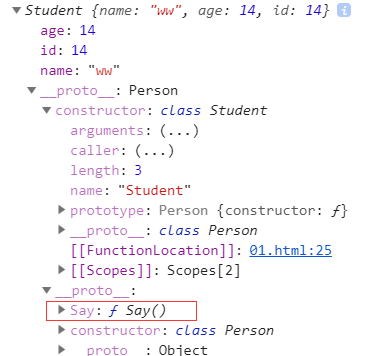原型对象的意义
- 通过new 一个构造函数,我们能够获得一个实例,在new 的过程中,程序会在内存中申请一块区域,同时我们可以加参数,所以每个对象都不一样。
- 原型对象则是同一个构造函数 new 出来的所有实例同时拥有一个原型对象,原型对象上挂在的属性或者方法是固定的提供这些实例使用
- 以上得出,原型对象的优点,固定为所有实例提供属性或方法,不会额外加内存
- 应用场景,每个对象独有的属性用构造函数,共有的属性和方法挂载到原型对象上
class
实例属性,写入在constructor中
静态属性与方法,写在constructor外,用static修饰
原型对象,写在constructor外
<script> class Person { constructor(name, age) { this.name = name; this.age = age } // 挂载到原型对象上 Say() { console.log('I am human') } } console.log(new Person('ss', 14)) </script>
继承,子类继承使用extends关键字,当子类需要写入私有的属性,必须添加constructor以及super(),super() 相当于父类构造器的引用,this关键字必须在super之后
<script> class Person { constructor(name, age) { this.name = name; this.age = age } // 挂在到原型对象上 Say() { console.log('I am human') } } class Student extends Person { constructor(name, age, id) { super(name, age) this.id = id } } console.log(new Student('ww', 14, 14)) </script>
